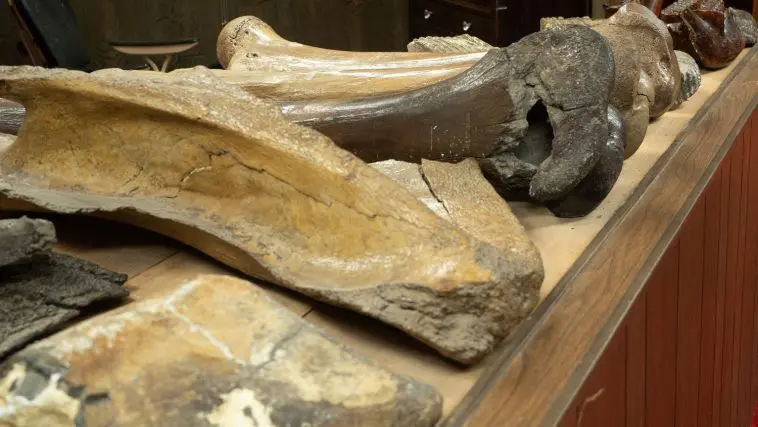[Originally published in 2015 as Is Soft Tissue Common in Dinosaur Bones?]
In early June, an extraordinary paper was published in the journal Nature Communications. The paper is free to read, so I encourage you to take a look at it. The authors of the paper begin by offering a summary of the various discoveries of soft tissue in dinosaur bones. They then make this important point:
Models proposed to account for such preservation indicate that it should be the exception rather than the rule. In particular, it has long been accepted that protein molecules decay in relatively short periods of time and cannot be preserved for longer than 4 million years. Therefore, even in cases where organic material is preserved, it is generally accepted that only parts of original proteins are preserved and that the full tertiary or quaternary structure has been lost.
If you aren’t familiar with the terms, “tertiary” and “quaternary” structures refer to details that determine the three-dimensional shape of a protein, which is very important for its chemical function. Essentially, the authors of the paper are saying that the individual chemicals (called amino acids) that make up the protein might still be around after 4 million years or so, but the protein would be highly degraded.
So, the authors say that according to the prevailing wisdom right now, soft tissue preservation in dinosaur bones (which are supposed to be much, much older than 4 million years) should be very rare. They decided to test this idea, and not surprisingly, they found that it was wrong. How did they test it? They looked at eight dinosaur fossils found in Cretaceous rock, which is supposed to be between 145 million and 65 million years old. The authors suggest that the fossils are 75 million years old. The important point, however, is that these bones were definitely not well-preserved. As one of the authors said in a news report:
They’re very scrappy, individual broken bones. I can’t even tell you what dinosaur they come from.
What they found in these “scrappy” bones is surprising,
at least if you think they are 75 million years old.
Two of the fossils yielded carbon-rich structures that resemble red blood cells (shown on the left in the image at the top of this post). All soft tissue is rich in carbon, which is mostly lost during fossilization. Given the fact that the structures are rich in carbon and have the shape of a red blood cell, the authors interpret them as unfossilized (soft) tissue. In addition, four fossils contained what appeared to be fibers of collagen protein. Importantly, this is exactly what we would expect to see if the collagen’s tertiary and quaternary structures were still present. In other words, it doesn’t look like the protein has been degraded significantly.
Now, of course, the authors are very cautious in their interpretation, as they should be. Nevertheless, based on what they have reported, it really does seem like they have found soft red blood cells and intact collagen fibers in almost every one of the fossils they analyzed.
What does this mean?
Here is what the authors say:
Incredibly, none of the samples showed external indicators of exceptional preservation and this strongly suggests that the preservation of soft tissues and even proteins is a more common phenomenon than previously accepted.
In other words, the authors conclude that if they can find soft tissue in their “scrappy” fossils, there ought to be a lot of soft tissue in dinosaur fossils. Currently, there is no explanation as to how that can be if such fossils are tens of millions of years old. Even Schweitzer’s attempt to claim that iron can preserve soft tissue requires an extraordinary set of conditions that would not occur very often. Indeed, the authors list that explanation as one which indicates that soft tissue preservation “should be the exception rather than the rule.”
If the authors are right, perhaps the best explanation is that such fossils are not tens of millions of years old.






